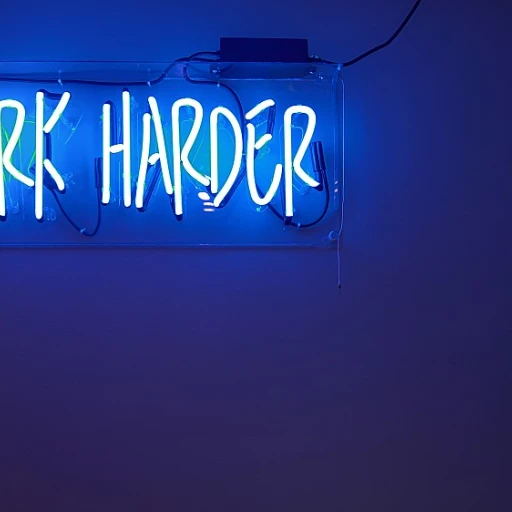Purpose of Performance Reviews
Performance reviews are crucial in the process of evaluating and enhancing an employee's role within the company. They provide an opportunity for managers and employees to set goals, discuss performance, and plan for future professional development. These reviews are not just about looking back over the past year but also about setting a path for improvement in the coming year.
Effective performance management involves regular feedback throughout the year, making the annual performance review a culmination of ongoing evaluation rather than a standalone event. This helps create a more comprehensive understanding of an employee's contributions and areas for improvement. Regular feedback supports not only the individual's growth but also benefits the team and the organization as a whole.
The review process for managers plays a significant role in identifying key areas of performance improvement and professional development. It aids in determining where employees can specialize or diversify their skills. This process facilitates open communication, ensuring team members feel valued and understood, which can lead to enhanced team cohesion and productivity.
Encouraging a culture where constructive feedback is the norm helps employees navigate their strengths and improve specific areas. This ongoing dialogue fosters a supportive environment where team members feel motivated to achieve their potential.
Annual performance reviews are also essential for aligning individual employee goals with that of the organization’s strategic objectives. By doing so, they help maintain a committed and focused workforce, contributing to the success of the organization.
To excel in this area, integrating effective phrases in performance appraisals can be a powerful tool. Explore more on how
mastering performance appraisals with effective phrases can aid in crafting meaningful evaluations.
Essential Elements of an Effective Performance Review Template
Crafting an effective annual performance review template is a strategic process that requires thoughtful consideration of various elements to ensure a comprehensive evaluation of employee performance. A robust review template should encompass several key components, each designed to provide valuable insights into an employee's progress and areas for development. Here are the essential elements to include:
- Objective Evaluation Metrics: Standardized metrics help in providing a fair assessment of each employee's performance. These metrics should be specific, measurable, and aligned with the organization’s goals to ensure objectivity and consistency during evaluations.
- Goal Setting and Achievement: Incorporating sections for both goal setting and evaluation of achieved goals helps in aligning employee efforts with organizational objectives. This component encourages managers and employees to collaborate on realistic and strategic goal setting, thus fostering a culture of goal orientation.
- Feedback Mechanisms: Providing and receiving feedback is crucial for professional development. A section dedicated to constructive feedback enables managers to offer insights into performance while allowing employees the opportunity to express their perspectives and propose solutions for improvement.
- Developmental Opportunities: Highlighting areas for further professional development fosters a culture of continuous learning and improvement. This section should include recommendations for training or mentoring opportunities that can help employees enhance their skills and competencies.
- Summary and Future Planning: A comprehensive summary of the performance review, coupled with plans and goals for the upcoming year, supports ongoing development and performance improvement efforts. Ensuring that both managers and team members are clear on next steps can enhance the effectiveness of the performance management process.
With these components in place, companies can ensure that their performance review templates are not only comprehensive but also aligned with the evolving needs of their workforce. For organizations aiming to bolster their performance improvement strategies, exploring resources such as
Mastering the Art of Performance Improvement Plan Training can provide invaluable insights into optimizing their review processes.
Leveraging Technology to Enhance Performance Review Practices
In this fast-paced world, technology is reshaping every aspect of our lives, including how performance reviews are conducted. Integrating technology into the performance review process can help elevate the effectiveness and efficiency of these evaluations. Here's how technology can streamline performance management for both employees and managers:
- Automated Review Templates: Utilizing digital platforms for review templates enables easy access and customization. It ensures that a consistent structure is maintained across different departments and roles, allowing managers to focus on specific areas of improvement in employee performance.
- Real-Time Feedback and Tracking: Technology facilitates ongoing feedback systems where managers and employees can record and track progress towards their goals throughout the year. This approach helps avoid the pitfalls of an annual performance review that might miss vital performance trends.
- Data-Driven Insights: By analyzing performance data, technology aids managers in identifying patterns and areas that require attention. Insights drawn from data help tailor development plans for individual team members, enhancing their professional growth.
- Efficiency in Process: Digital platforms save time by automating routine tasks, sending reminders about upcoming quarterly performance reviews, and compiling final reports. This ensures the process remains smooth and less time-consuming.
Adopting technological solutions for performance reviews doesn't just make the process more efficient but also allows for a more comprehensive evaluation.
For a deeper dive into crafting strategies that boost engagement and productivity, explore how crafting compelling employer branding strategies can align with these technological tools to attract top talent.
Ultimately, integrating technology in performance reviews aligns with modern enterprise trends, empowering employees by making the evaluation process transparent, specific, and conducive to professional development.
Customizing Templates for Different Roles
Tailoring Your Performance Review Template for Specific Roles
Customizing performance review templates to suit the unique needs of different roles within an organization is crucial. A one-size-fits-all template might not effectively capture the diverse goals and expectations of various employee roles. Here’s how you can adjust your review templates for specificity and relevance:
- Identify Role-Specific Goals: Begin by outlining clear and specific goals for each role. This enables both managers and employees to have a targeted focus during the review process and encourages alignment with the organizational objectives and team contributions.
- Role-Based Feedback: Tailor the feedback criteria to reflect the responsibilities and expectations unique to each position. For instance, a sales position might focus on metrics like targets met and client satisfaction, whereas a role in innovation could be evaluated based on creativity and project development.
- Development Opportunities: Customize the template to highlight specific areas of improvement for professional development. By specifying the skills or competencies that need enhancement, employees are better equipped for career growth within their role. Including this in templates fosters a culture of continuous development and goal setting.
- Time Allocation: Different roles might require varying frequencies of evaluation. Managers of employees involved in rapidly evolving projects might consider quarterly performance reviews, while other roles might suit an annual or semi-annual schedule.
- Constructive Feedback Mechanisms: Ensure the template includes sections for constructive feedback pertinent to the employee's specific role. This involves posing relevant questions that facilitate reflective evaluation and actionable input.
By incorporating these ideas, managers can create tailored performance review templates that effectively capture the nuances of each role, thereby promoting a more personalized and productive review experience. Adapting templates not only helps in addressing team member needs but also strengthens team performance management across the board.
Best Practices for Conducting Reviews
Guidelines for Effective Performance Review Sessions
Effectively conducting performance reviews is crucial to ensure they add value to both managers and employees. Here are some best practices to guide the review process:
- Preparation is Key: Managers should come prepared with specific examples of the employee's work from throughout the year. This ensures the evaluation is based on a comprehensive view of employee performance, not just recent achievements.
- Set Clear Goals: Revisiting and setting clear, achievable goals is essential. It allows team members to understand their future direction and areas for professional development.
- Deliver Constructive Feedback: Providing constructive feedback is crucial. Be specific about areas that need improvement while also highlighting successes. This helps enhance employee engagement and the overall performance management process.
- Encouraging Two-Way Dialogue: Create space for employees to ask questions, share insights, and provide feedback on their experiences. This can lead to a more open, collaborative review process.
- Utilize Review Templates: Having a structured review template helps maintain consistency and efficiency in evaluations. Tailor the template to different roles and departments to ensure relevance and effectiveness.
- Continuous Feedback Throughout the Year: Don’t wait for annual performance reviews; incorporate quarterly performance evaluations. This allows for timely constructive feedback and adjustments.
- Document the Process: Keep detailed records of all performance review discussions. This provides a reference for future evaluations, helping track employee progress and development over time.
Incorporating these practices into the performance evaluation process ensures that reviews are not just a formality, but a valuable tool for development and performance improvement. Managers and employees alike can benefit from a well-structured review system that encourages growth and progress.
Adapting to Tomorrow's Performance Review Requirements
The landscape of performance reviews is constantly evolving, with emerging trends influencing how organizations conduct evaluations. Here are some future trends to consider for enhancing your annual performance review templates:
- Continuous Feedback Culture: Moving from annual reviews to a structure where feedback is provided continuously throughout the year can significantly benefit employee performance and development. This shift fosters a culture where team members receive timely insights and can act promptly on specific areas that require improvement.
- Integration of Technology: Advanced HR tech solutions, such as AI-driven analytics and performance tracking tools, are making it easier for managers to streamline the review process. These technologies provide valuable insights into employee evaluation, facilitating data-driven decisions that support employee growth and goals alignment.
- Focus on Development Over Evaluation: There's an increasing trend of shifting the focus from merely assessing past performance to fostering future professional development. This requires a review template designed to identify potential opportunities for skill enhancement and career growth, supporting long-term performance improvement.
- Customization and Personalization: As highlighted in previous sections, tailoring review templates to fit specific roles and industry needs is becoming essential. Personalized feedback and customized goal-setting help employees to better understand their contributions to the team and overall organizational objectives.
- Remote and Hybrid Work Adaptations: With many organizations adopting remote or hybrid work models, performance review processes must adapt. Leveraging digital tools for virtual feedback sessions and setting clear work-from-home expectations ensure that managers and employees are aligned with performance metrics regardless of physical work location.
By understanding and implementing these trends, companies can craft effective performance review templates that align with both current needs and future challenges in performance management.














